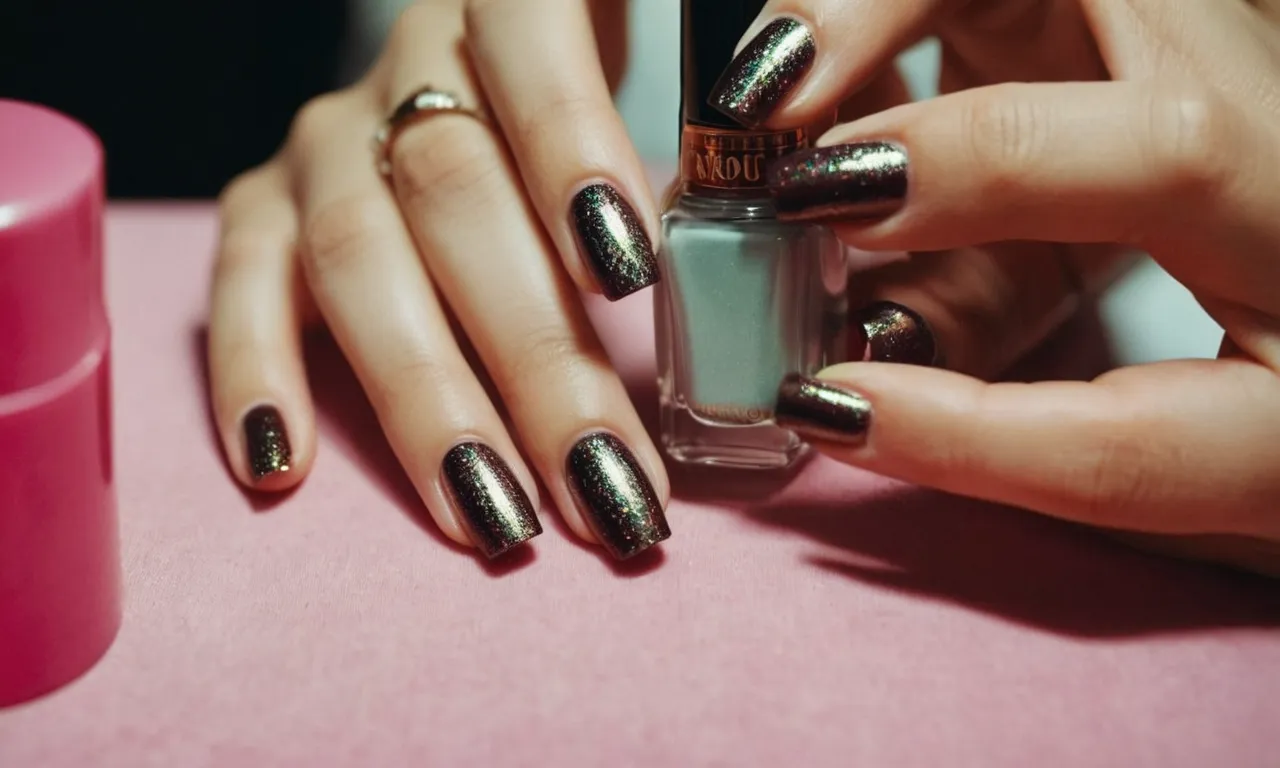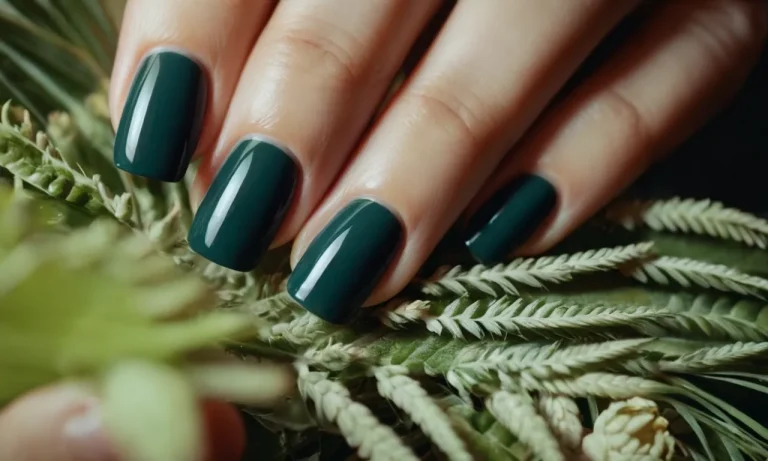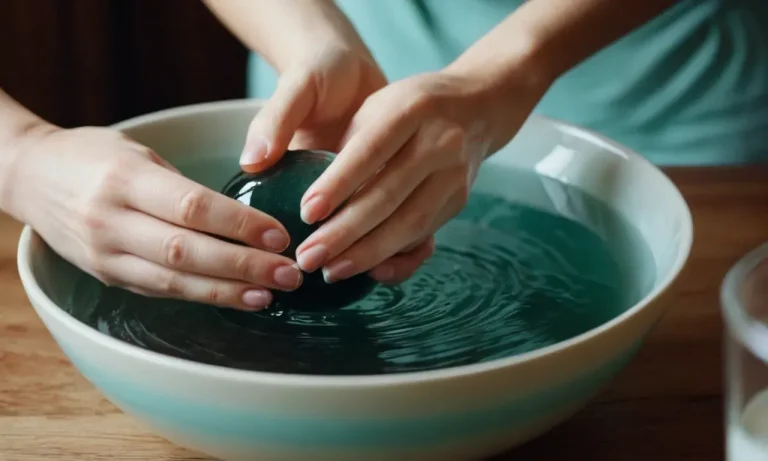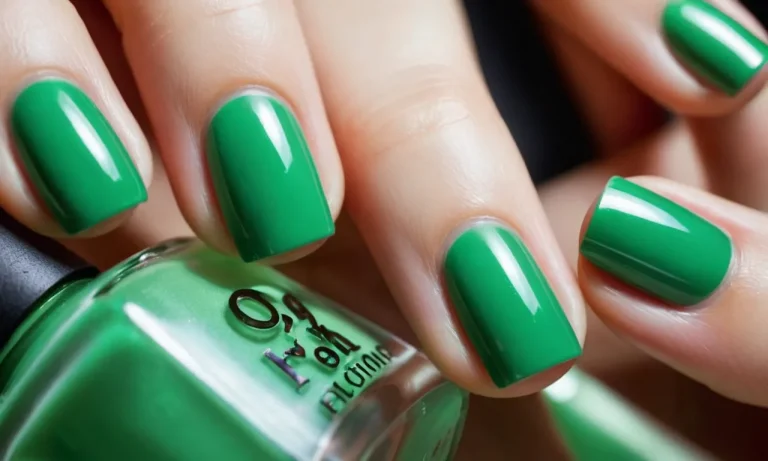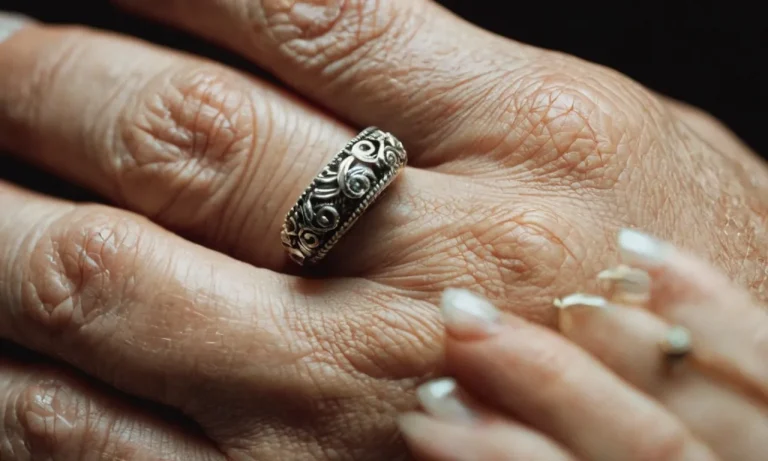How Long Does It Take To Learn How To Do Nails?
If you’ve ever gotten a manicure or pedicure at a nail salon, you may have thought to yourself that you’d like to learn how to meticulously shape nails, apply polish, and create designs. But becoming a skilled nail technician requires patience and practice.
So how long does it really take to learn how to do nails professionally?
If you’re short on time, here’s a quick answer to your question: It can take 6 months to 1 year of consistent practice and training to become proficient at basic nail care services. However, to truly master advanced techniques and build speed takes 2-3 years of experience.
The Basics of Nail Care
Nail shapes and tips
When doing your own nails or someone else’s, it’s important to consider the nail shape. The most common shapes are square, round, oval, almond, and squoval (a mix of square and oval). Square and squoval shapes work well for short nails, while longer nails can pull off more dramatic oval and almond shapes.
Tips to choose a flattering shape include considering your nail beds, finger width, and lifestyle. File nails into the desired shape before applying polish.
Cuticle care
Properly caring for your cuticles is crucial for healthy nails. Start by softening the cuticles in warm water or with oil, then gently push them back with a cuticle pusher or orange stick. Never cut or tear the cuticles, as this can lead to infection.
Use cuticle remover or nippers only on loose, dead cuticle skin. Finish up with a hydrating cuticle oil or cream.
Filing and buffing
Use a nail file to smooth rough edges and shape nails. File in one direction starting from the outside of the nail towards the center. Buffing not only smoothens the nails, but helps polish adhere better. Use a 4-way buffer to shine the nails. Buff lightly back and forth rather than in circles.
Always buff gently to avoid thinning the nails.
Applying polish
The key to a flawless, long-lasting manicure is proper polish application. Start with a base coat to protect nails from staining and help polish stick. Apply 2-3 thin coats of polish, allowing each coat to dry first to prevent smudging. Finish with a top coat to seal in color and add shine.
Cap the tips of the nails with polish to prevent chipping. Let polish dry completely before using hands.
Basic nail art
It’s easy to elevate a simple manicure with some nail art like polka dots, stripes, or color blocking. Invest in a striping brush for clean lines and dotting tools for perfect polka dots. Watch video tutorials to master basic techniques like ombre, reverse French tips, and graffiti nails.
Start with easy, minimalistic designs in a couple colors before trying more advanced nail art.
With some practice and patience, proper nail care and beautiful DIY manicures are within your grasp. Pay attention to the condition of your nails and cuticles. File into flattering shapes. Master a flawless base and top coat polish application. Add some simple art for a stylish, creative touch.
Your tips will be runway-worthy in no time!
Advanced Nail Techniques
Acrylics and gels
Acrylics and gel manicures are popular nail enhancement services that involve applying liquid acrylic or gel over the natural nail and shaping it into the desired look. It takes great skill and lots of practice to perfect application techniques like proper prep, priming, application, shaping, and finishing.
Many aspiring nail techs struggle at first with getting a smooth, even application without lifting or damage to the natural nail. Generally, it takes a few months of constant practice to get really comfortable doing acrylic/gel manicures and to be able to complete them in a reasonable timeframe.
An inexperienced tech may take 60-90 minutes just to apply a basic acrylic or gel set, while an experienced pro can complete the same service in 30-45 minutes.
Nail art designs
Nail art involves using polish, paint, glitters, foils, rhinestones, and more to create designs on the nails. There are countless nail art techniques to learn like ombre, water marble, stamping, decals, and freehand painting.
It can take weeks or months of practice before a nail tech gains the dexterity and control needed to cleanly execute intricate nail art. Building speed is also a challenge, as a fast application is key for working efficiently.
Expect it to take at least 40-60 hours of focused practice time on art techniques before feeling truly comfortable recreating them on clients.
Nail extensions and wraps
Nail extensions like acrylics, gels, and dip powders lengthen and reinforce the natural nail. Nail wraps involve cutting thin fiber, silk, or paper wraps and applying them to the nail plate to extend its length. Both of these techniques require precision cutting, measuring, gluing, and filing skills.
Most nail schools recommend students spend a minimum of 80-100 hours practicing these services on models before offering them to paying clients. Getting the application smooth with no lifting, and custom fitting the extensions to each client’s unique nail shape and curvature takes lots of practice.
Expect to need at least 2-3 months of regular practice before gaining proficiency.
Paraffin wax treatments
Paraffin wax treatments involve dipping the client’s hands or feet into warm paraffin to hydrate the skin and joints. The technique seems simple, but ensuring safe wax temperature and proper sanitation procedures takes training. Technicians need to learn skills like:
- Preparing equipment and wax safely
- Testing wax temperature
- Assisting clients in dipping and removing hands/feet
- Wrapping extremities in plastic, towels, or gloves to retain heat
- Cleaning up wax spills properly
- Disinfecting equipment after each use
It can take 15-25 hours of practice under supervision to develop correct paraffin skills. Wax burns are a risk if proper temperature and safety isn’t followed.
Nail disorders and conditions
Recognizing and addressing common nail disorders and conditions like infections, damage, and disease is a critical skill. It takes formal education, testing, and experience to accurately diagnose issues and provide appropriate treatments or refer clients to medical care.
Cosmetology programs typically dedicate 15-25 hours to teaching nail anatomy, physiology, and disorders. Passing the state board exam also requires knowledge of nail conditions. However, real-world experience seeing and addressing a range of nail issues is essential.
It can take 2-3 years of regular work as a nail tech to gain deep expertise in assessing and managing nail health.
Developing Speed and Precision
Practice consistently on models
Consistent practice is key to developing speed and precision when learning how to do nails. Set aside dedicated time each day to practice on models – whether they are plastic fingers, friends willing to let you practice on them, or you do one hand while your mentor does the other.
The more you practice, the more the movements and techniques will become second nature. Most professionals recommend practicing at least 2-3 hours a day when starting out. Over time, you’ll learn which techniques take you longer and you can spend more focused practice on building speed in those areas.
Drills to increase hand dexterity
Doing targeted hand dexterity drills can help improve the coordination between your eyes and hands. Things like playing with clay or tossing and catching small objects helps build hand-eye coordination. You can also try finger isolation exercises where you move one finger at a time with precision.
There are even products like dexterity balls and resistance bands made specifically for developing fine motor skills and hand strength for nail work. The more nimble your hands become, the faster and more precise your nail work will be.
Using professional tools
Using high-quality professional tools can cut down on application time significantly. Low quality nail tools that are clunky or difficult to control will slow you down. Invest in an ergonomic nail drill, precise nail clippers, and premium gel and acrylic brushes.
Having the right tools for the job makes completing steps of the nail process much easier and quicker. For example, a heavy duty e-file can shorten filing time from minutes to seconds compared to hand filing alone. The right tools become extensions of your hands with practice.
Creating looks for different nail shapes
Being able to quickly adapt designs and techniques for different nail shapes will help boost your speed. Get comfortable working on square, squoval, round, almond, coffin and other popular nail shapes.
The more familiar you are with the nuances of different shapes, the faster you can refine your approach during the application process. For example, you may need to adjust the brush angle and hand position when doing nail art on a round versus coffin-shaped nail.
Practicing diverse designs on various nail shapes will develop your versatility as a nail tech.
Catering to customer preferences
Being efficient at accommodating customer preferences will improve your application speed. Listen closely to what each client wants and practice adapting techniques accordingly. For example, if a client wants an ultra sheer pink gel polish look, focus on perfecting a single coat application.
Or for short natural nails, practice quick shaping and cuticle cleaning methods. The more you tailor your process to what each client desires, the faster your service time will become. Developing a repertoire of customized approaches makes you a more versatile nail tech.
Business Skills
Developing a client base
Building a solid client base is crucial for any nail technician starting out. Here are some tips for attracting and retaining customers:
- Create social media profiles highlighting your work and style. Post frequently to build an audience.
- Offer promotions or discounts to first-time customers or those who refer others to your business.
- Network with local businesses like hair salons and spas to form referral partnerships.
- Provide exceptional customer service and build personal relationships with regulars.
- Stay up-to-date on the latest nail trends and techniques.
Pricing and packages
Determining how to price your nail services can be tricky. You’ll need to consider the going rates in your area, your level of experience, operating costs, and profit goals. Some pricing strategies include:
- Charge by the service (manicure, pedicure, sculpted nails, etc.)
- Offer package deals for multiple services purchased at once.
- Have tiered pricing levels (basic, deluxe, premium).
- Increase rates as your skills and reputation grow.
Be sure to reevaluate pricing regularly to account for inflation and other factors. Many nail techs offer monthly memberships or loyalty programs to encourage repeat business.
Salon safety and sanitation
Maintaining proper sanitation and safety practices is a legal requirement for nail salons. Some best practices include:
- Sterilizing all tools and equipment between clients.
- Wearing gloves during procedures and washing hands frequently.
- Disinfecting workstations and pedicure bowls.
- Properly storing products and chemicals.
- Having up-to-date training on safe chemical handling.
- Providing ventilation to minimize exposure to fumes.
Salons should be inspected and licensed by the state board of cosmetology. Continuing education on safety topics is highly recommended.
Continuing education
Ongoing education allows nail techs to perfect their craft and learn new techniques. Some options include:
- Attending industry trade shows and conventions.
- Taking classes at cosmetology schools.
- Earning certifications in specialty services like nail art or extensions.
- Reading nail publications and blogs.
- Watching tutorial videos from experts.
- Practicing new methods on models or artificial hands.
Many states require a minimum number of continuing education hours each year to renew your nail technician license. Investing in your skills benefits both you and your clients!
State Licensing Requirements
Completing an Approved Training Program
To obtain a nail technician license, most states require completing a state-approved nail technician training program. These programs are offered at community colleges, technical schools, and private beauty schools.
Program length varies by state but averages between 250-350 hours of combined classroom instruction and hands-on practice.
Typical course topics include nail structure and anatomy, manicure and pedicure procedures, artificial nail techniques, sanitation and infection control, business practices, and state laws and regulations.
Students get experience working on real clients in a salon-like setting under instructor supervision to develop necessary skills.
Passing Written and Practical Exams
After completing an approved training program, candidates must pass a written and a practical exam to demonstrate their knowledge and competency. The written test covers nail structure, diseases and disorders, sanitation, state laws, and more.
The hands-on exam evaluates skills in areas like manicure, pedicure, acrylics application and removal, and maintaining safety and infection control.
Both exams are administered by the state licensing board or a third-party testing company. Fees range from $50-$150. Testing accommodations are available for those with eligible disabilities. Candidates who fail can retake the exams after paying a retesting fee.
Meeting Hourly Requirements
Along with training and testing requirements, most states mandate a minimum number of service hours performed under supervision after getting the license. For nail technicians this ranges from 240-800 hours depending on the state.
The supervised hours ensure new licensees gain professional work experience before providing services independently.
Renewing Your License
To keep a nail technician license current, renewal is required every 1-2 years depending on the state. Typical renewal requirements include:
Continuing education covers topics like new products/techniques, health and safety, laws and regulations changes. States may require licensees to complete a renewal application documenting they are meeting requirements.
Maintaining an active license status allows legal practice as a nail tech in compliance with state regulations. Failing to properly renew can lead to late fees or even license suspension if too much time lapses.
Conclusion
Becoming an exceptional nail technician goes far beyond just learning the basics. It takes continual practice and expanding your skills over months and years to truly master advanced techniques and provide top-notch service.
But if you have the passion for nails and work diligently to expand your talents, you can develop a rewarding career caring for clients’ nails.
The most important things are to get quality training, keep an open mind, stay up-to-date on the latest trends and techniques, and above all – enjoy making clients look and feel their best through your work.
With dedication and persistence, you’ll be able to learn the ins and outs of professional nail care.

